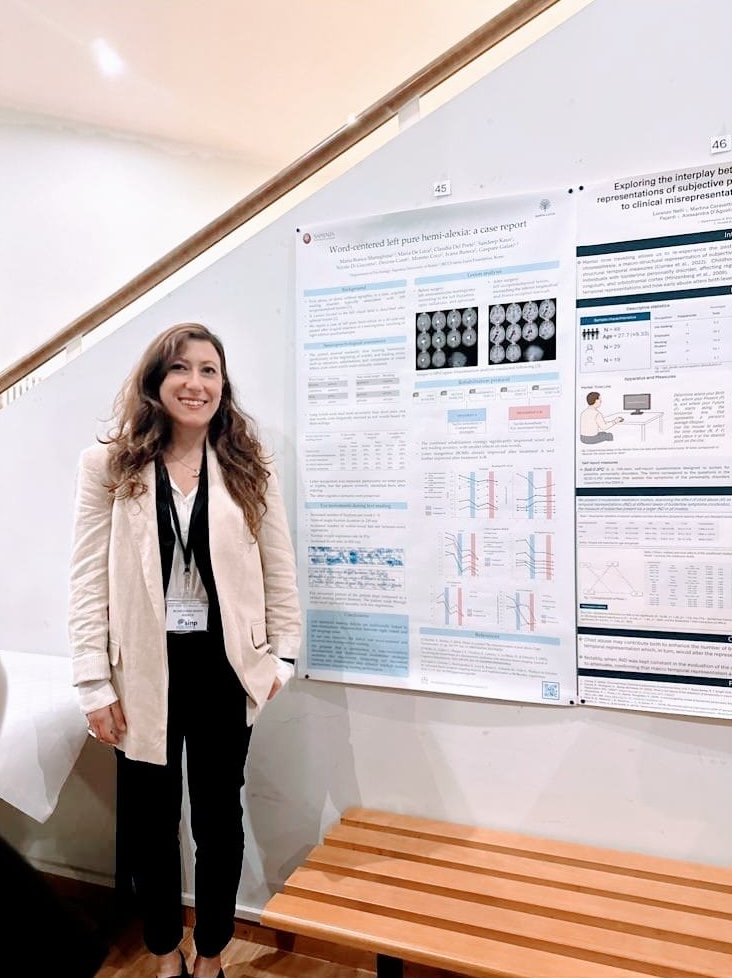
Our research fellow Maria Bianca Muneghina presented a poster entitled: “Word-centered left pure hemi-alexia: a case report” at the SINP 2025 congress, Urbino, Italy.
Pure alexia, or alexia without agraphia, is a rare, acquired reading disorder typically associated with left occipitotemporal lesions. A variant affecting only the left visual field has been described after splenial lesions. We reported a case of left pure hemi-alexia in a 63-year-old patient following surgical resection of a left intraventricular meningioma, which resulted in a left occipitotemporal, predominantly subcortical, lesion and right inferior quadrantanopia. The patient showed markedly slow reading, hesitations (particularly at the beginning of words), and reading errors such as omissions, substitutions, and completions of initial letters, even when words were vertically oriented. Long words were read more accurately than short ones, and non-words were frequently misread as real words based on their endings. Letter recognition was impaired, particularly for letter pairs or triplets, but the patient correctly identified them after copying. The other cognitive domains were preserved The study employed disconnection analysis on T1 MRI scans, and eye movement recordings during text reading. An ad-hoc rehabilitation intervention involved tactile-kinesthetic compensatory strategies alone and then in combination with eye movement training. Disconnection analysis revealed disruptions of the left inferior frontal-occipital and inferior longitudinal fasciculi, along with a splenial lesion. Eye movement recordings showed excessive within-word fixations, though fixation duration was normal, and an increased number of within-word, but not between-word, regressions. The combined rehabilitation strategy significantly improved word and text reading accuracy, with smaller effects on non-words. Left hemifield reading deficits are traditionally linked to inter-hemispheric right visual and left language areas. However, in this case, the deficit was word-centered and occurred also during natural reading. We propose that a combination of inter-hemispheric disconnection and dysfunctional oculomotor strategies underlies this impairment. Integrating eye movement training into rehabilitation may enhance residual reading mechanisms, improving reading performance.